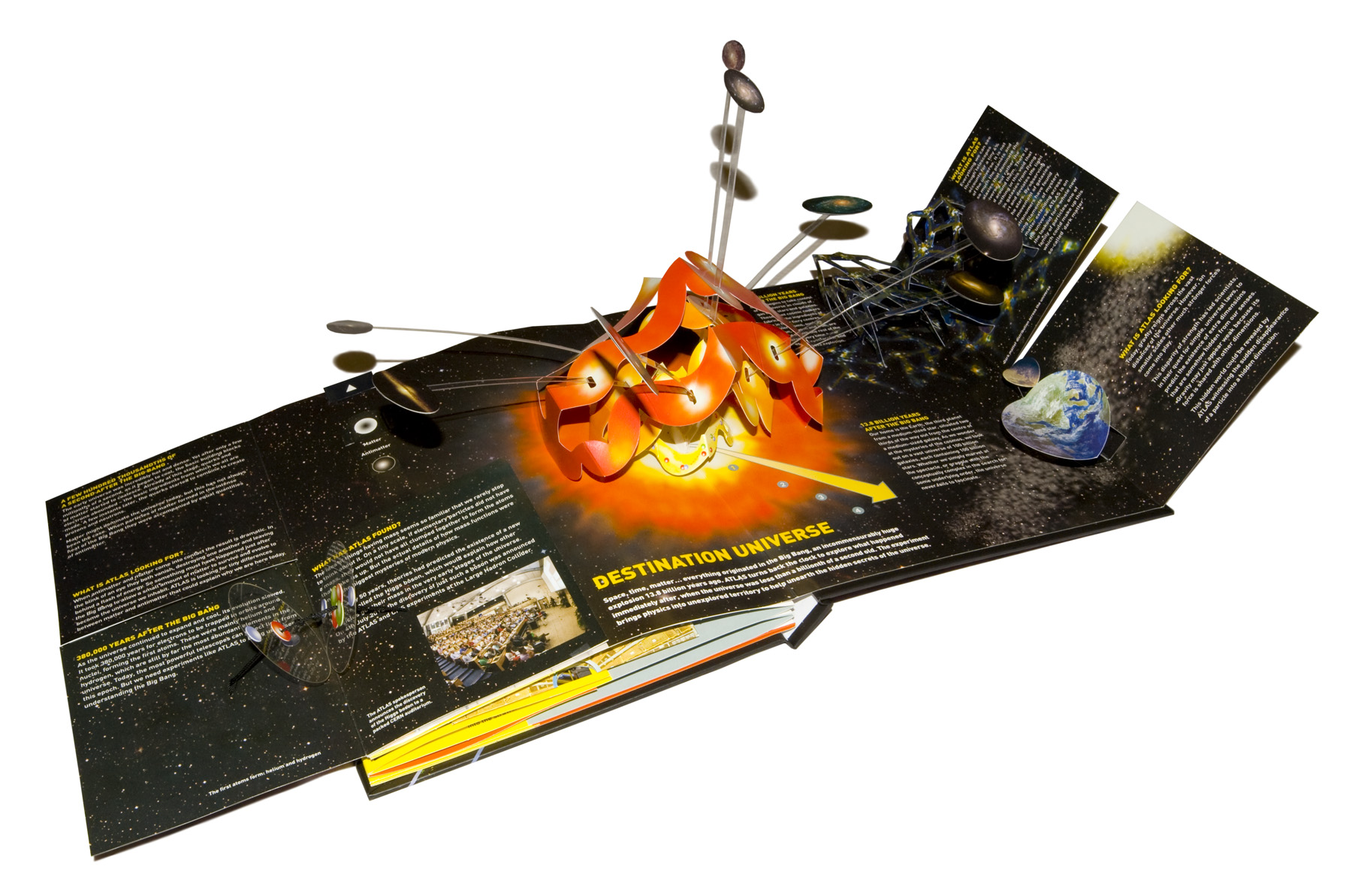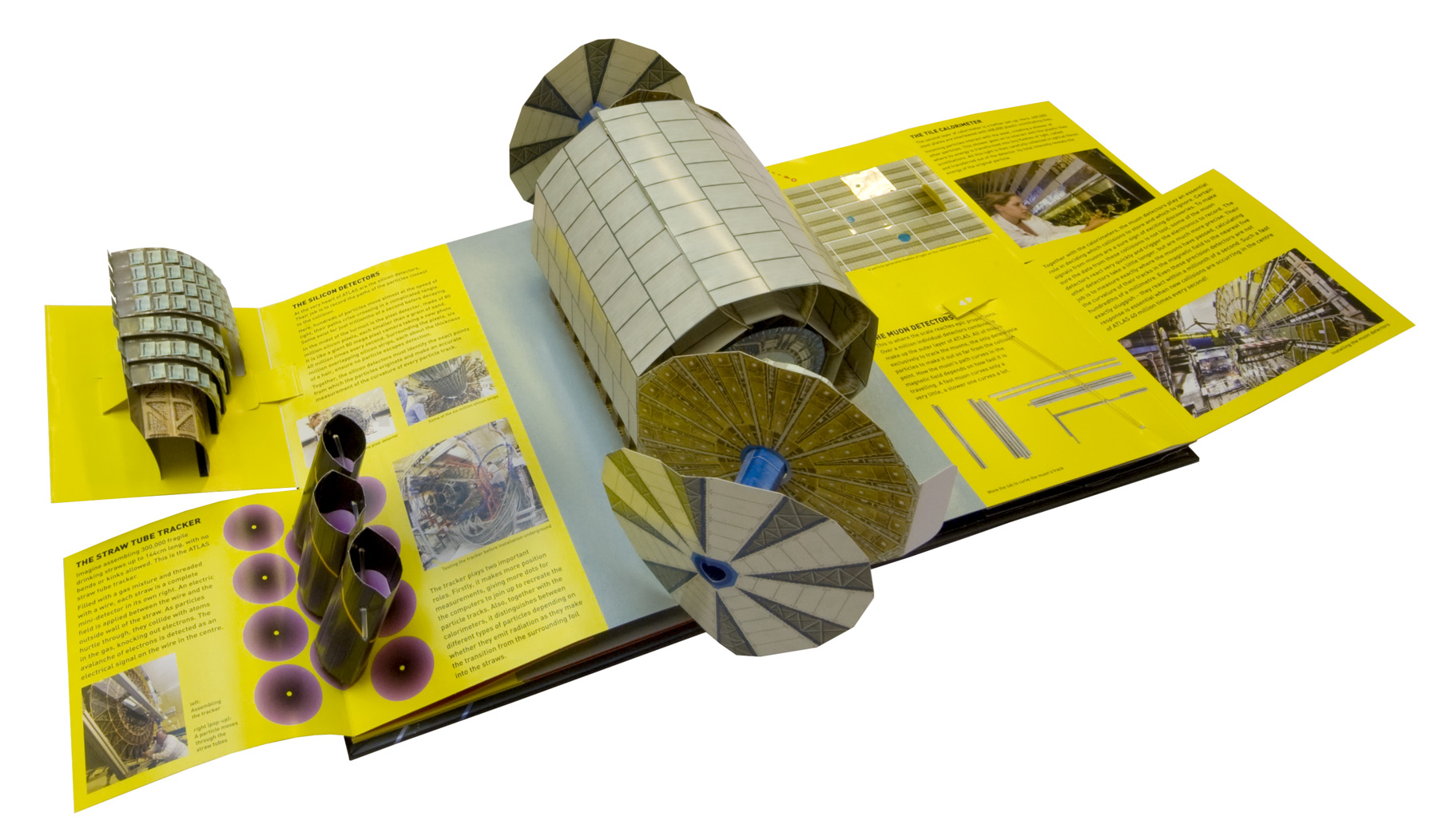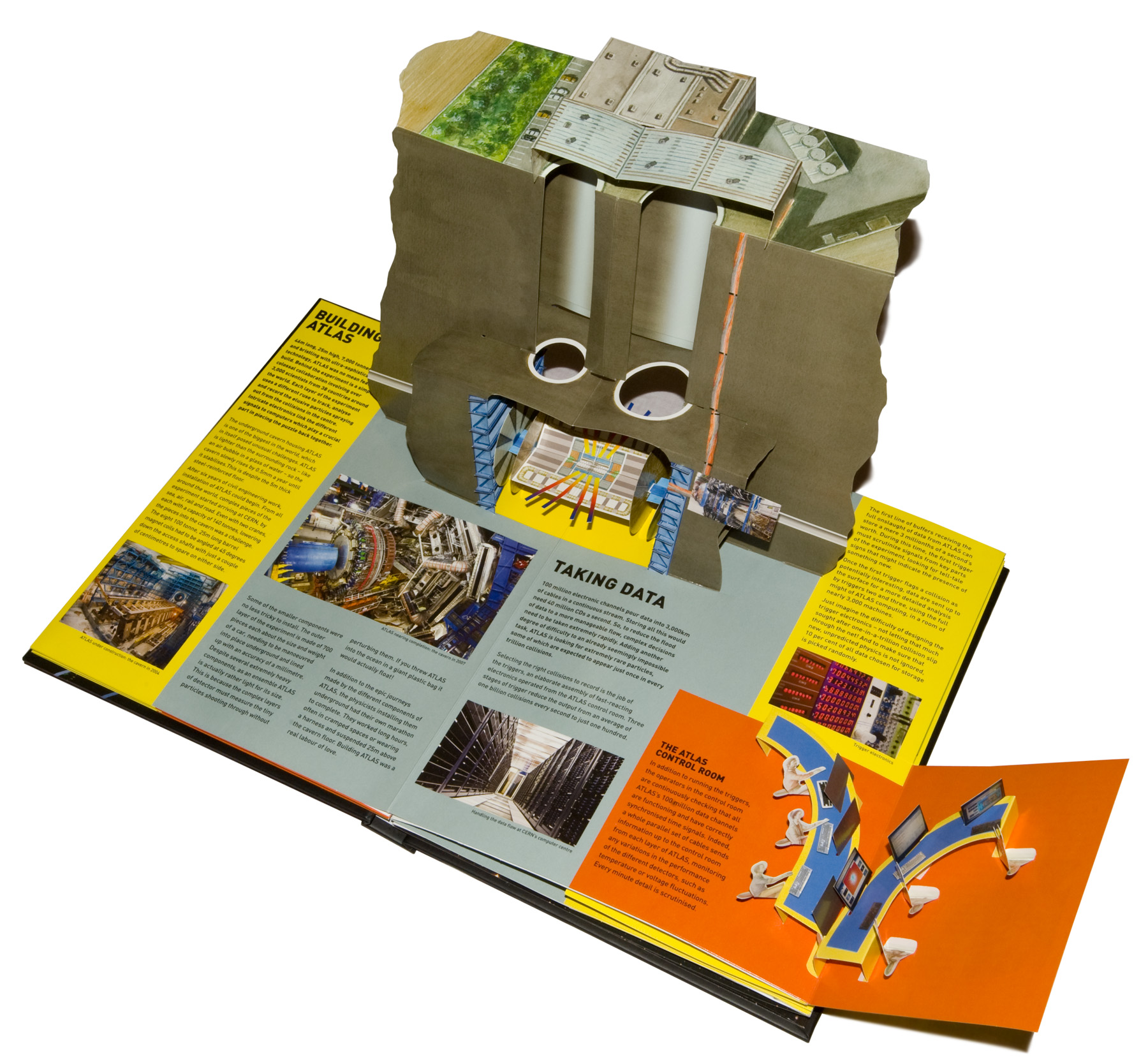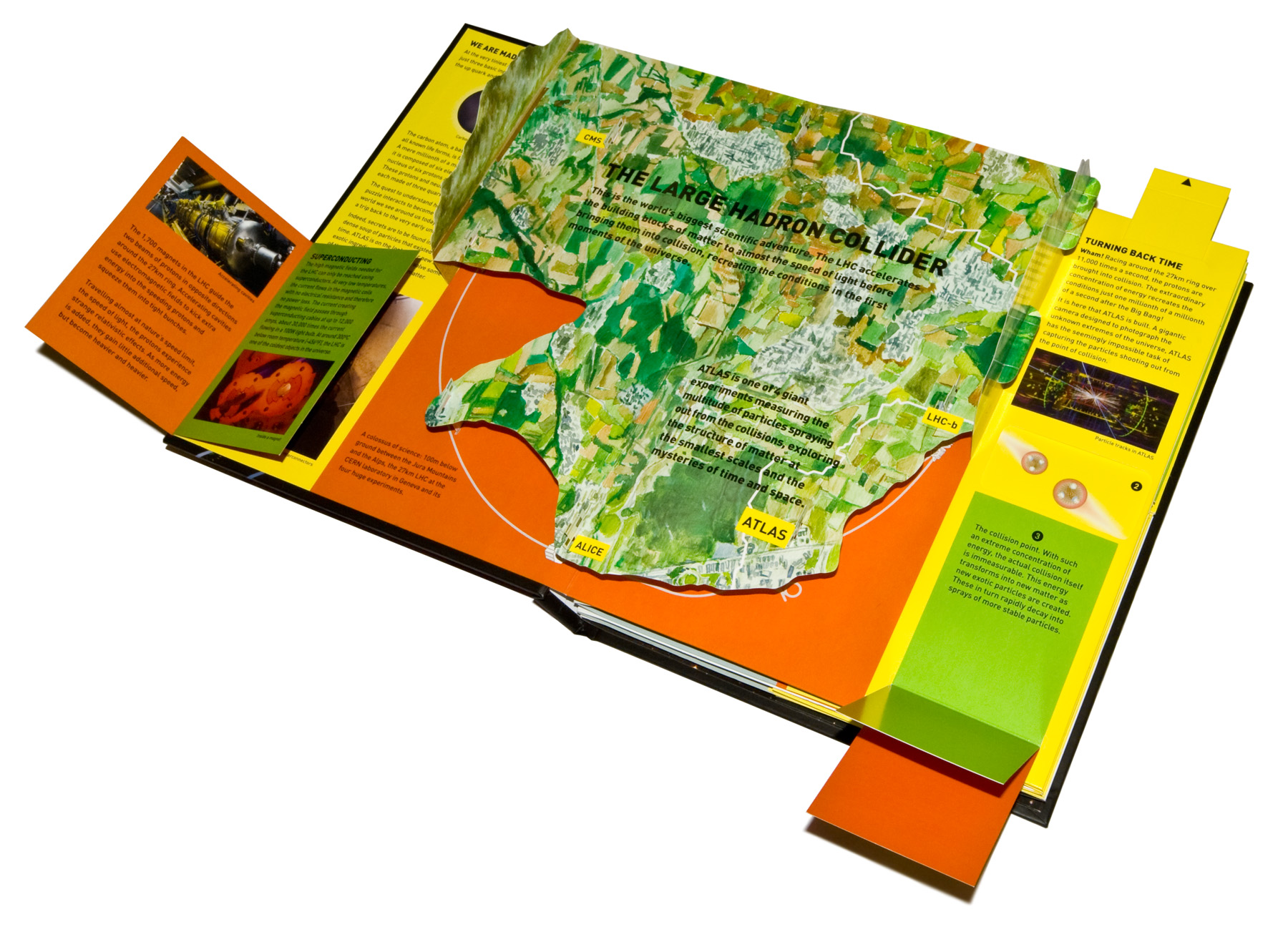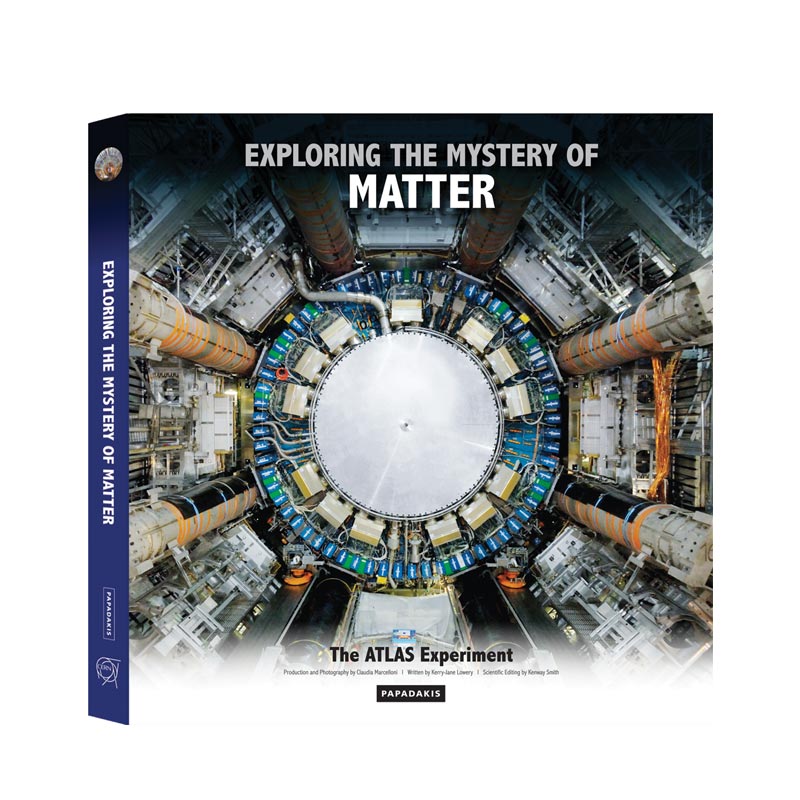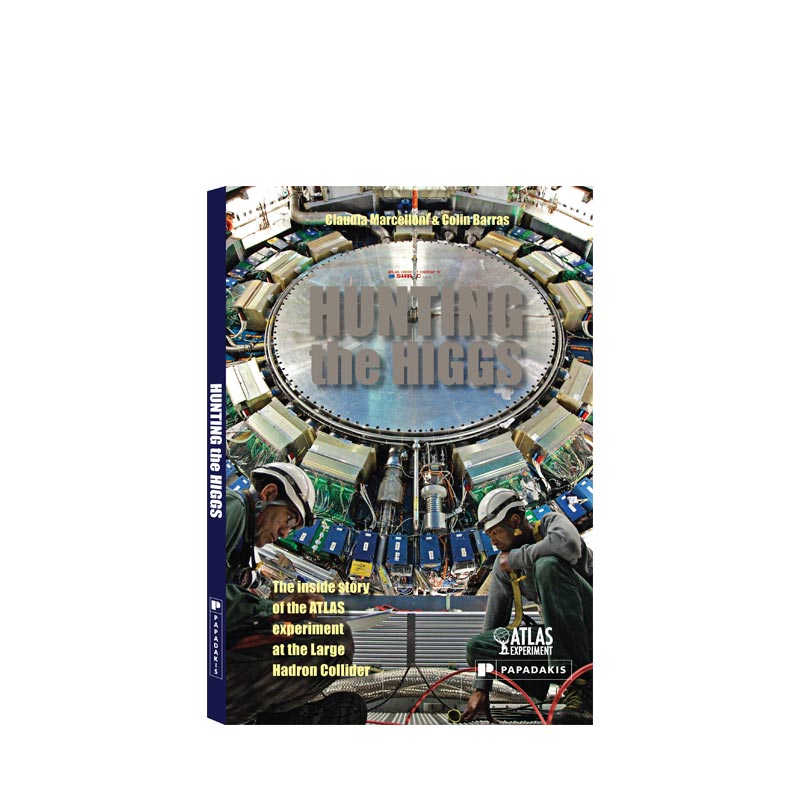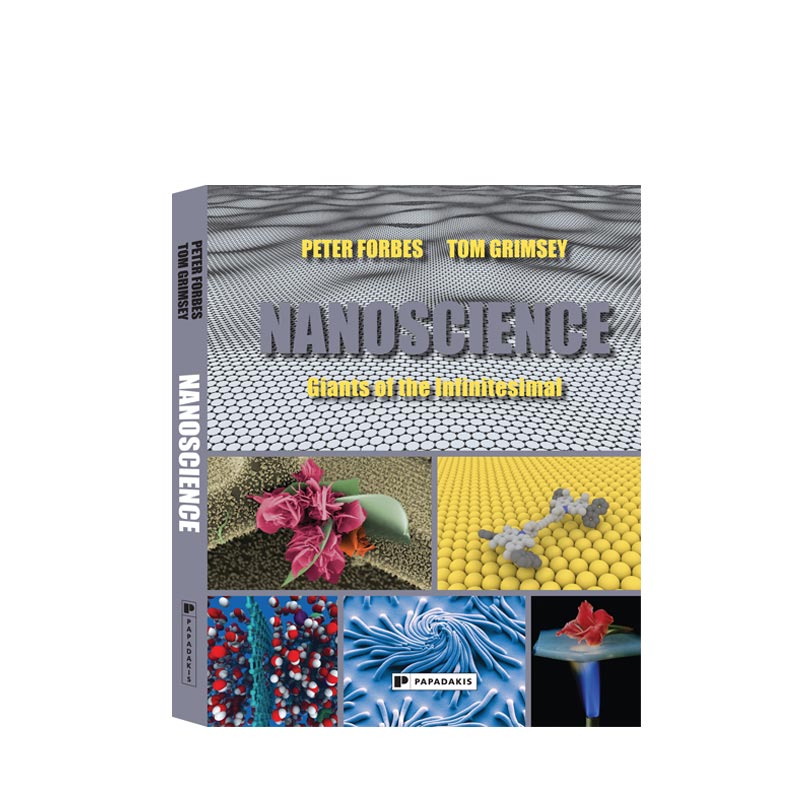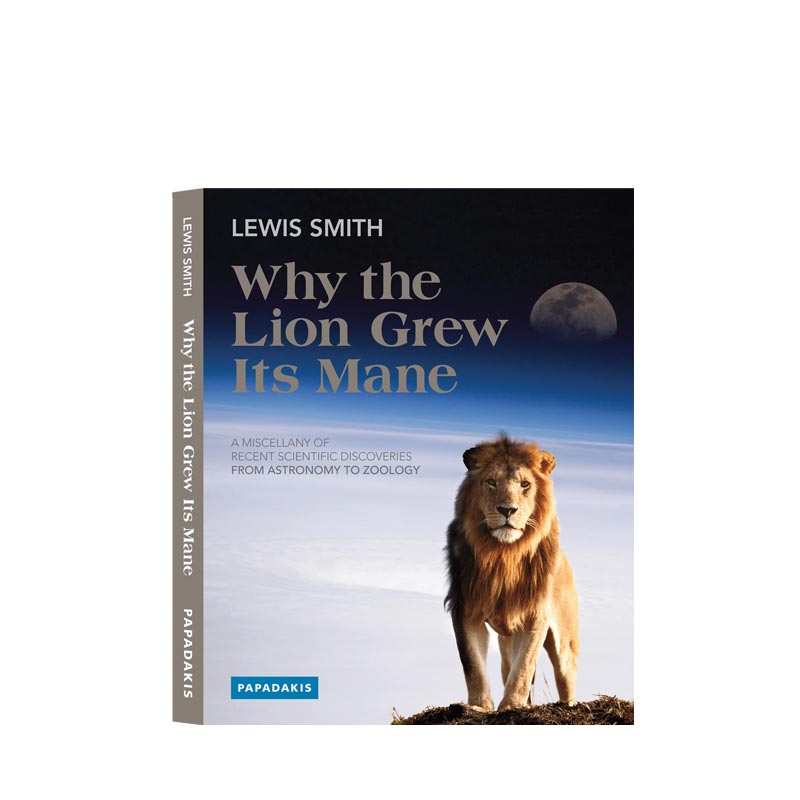The Large Hadron Collider Pop-up Book
Voyage to the Heart of Matter – The Higgs Edition
Anton Radevsky & Emma Sanders
Now you can experience one of the most significant technological wonders of the modern world leap from the page in 3D pop-up!
280 x 220 mm
8 Pop-up pages
Hardback with plastic sleeve
ISBN: 978-1-906506-41-4
£24.99
Subject: Science
7000 tonnes of metal, glass, plastic, cables and computer chips leap from the page in miniature pop-up, to tell the story of the Large Hadron Collider’s quest to understand the birth of the universe. Protons, travelling at nearly the speed of light, collide within the heart of the ATLAS detector, sending out showers of debris to recreate 40 million times a second, the conditions that existed millionths of a second after the Big Bang! This exciting new edition has been updated throughout to include the revolutionary discovery of the Higgs boson, which is illustrated in a newly-commissioned pop-out element. The Science Museum is supporting the project in recognition of the book’s unique approach to communicating contemporary science. Now all ages can join the ATLAS Experiment on this fascinating journey to the beginnings of the universe in this astonishing pop-up book.
Purchase on AmazonPurchase at Waterstones
Also available at the CERN Shop

